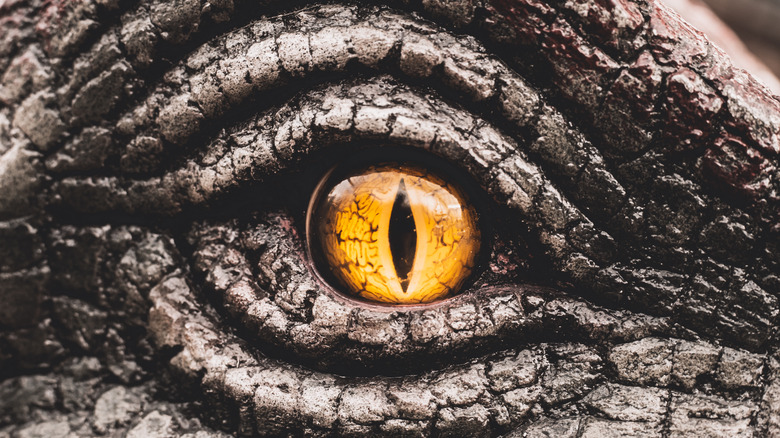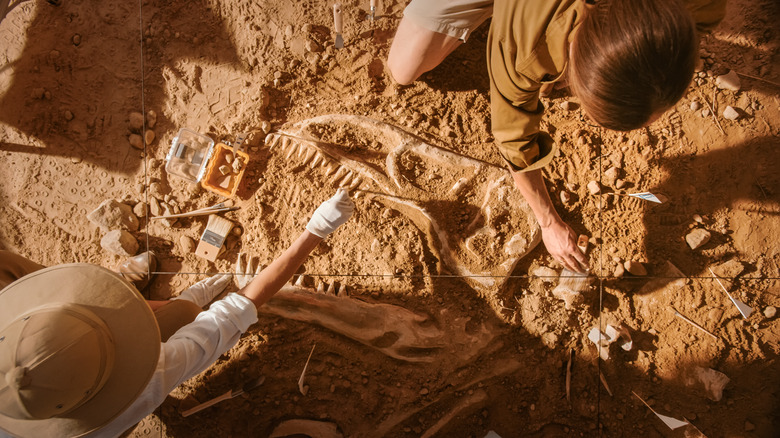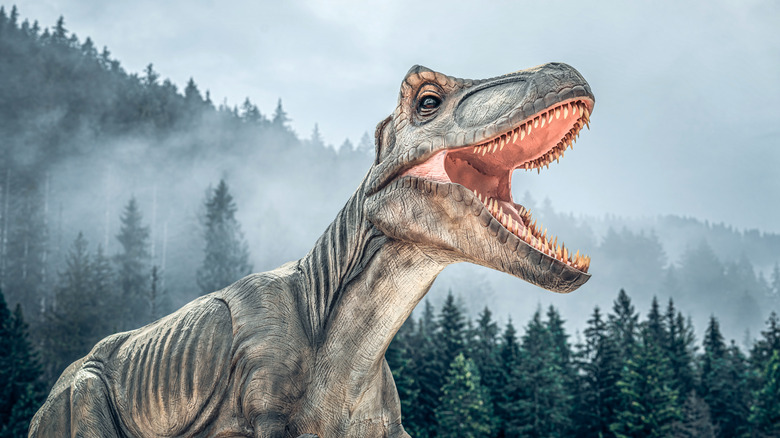Why Researchers Have Such A Hard Time Determining The Sex Of Dinosaurs
There's something eternally fascinating about dinosaurs. A whole generation who grew up in the wake of "Jurassic Park" would harbor dreams of becoming archeologists. They fantasized about the possibility of bringing dinosaurs back to life for real, collected all manner of dinosaur merchandise, and argued over the virtues of stegosaurus over triceratops and such.
These huge, fascinating, prehistoric beasts will always be great draws to museums and exhibitions around the world and the field of archeology continues to make regular new dino-discoveries. A fossil unearthed in 2018 belonged to a new kind of dinosaur dubbed Stegouros elengassen, which had a bony tail somewhat similar to a rattlesnake's, as CNN reports. It was ostensibly a weapon unlike any seen before on a dinosaur.
There's still so much to learn about these enigmatic giants from a time long since passed. They're a uniquely challenging case study. For instance, determining the sex of fossils is particularly difficult.
Reproductive organs don't fossilize
Dinosaur reproductive organs have never been discovered, as BBC Earth reports. This is because such organs (like any others) would be formed from soft, fleshy material that would have perished soon after the dinosaur itself died. Per the Australian Museum, fossilized evidence of such materials would be very rare indeed, as only the hardest of remains like teeth and bones tend to fossilize.
It's possible that dinosaurs (at least, some species) had a cloaca instead of such organs, as BBC Earth further explains. Reproduction in this fashion would have meant that they didn't have or need reproductive organs in the first place.
This compounds the issue of determining the sex of fossilized remains, along with the fact that sexual dimorphism had not been conclusively proven to have existed in dinosaur species, as National Geographic notes. Essentially, evidence that specific specimens are male or female could only realistically be found in the bones, and they don't seem to be in much of a hurry to tell us. But, it seems they're starting to share a bit more.
The bones of birds provide a clue
Paleontologist Anusuya Chinsamy (et al) state that the Mesozoic bird Confuciusornis sanctus bird, which lived during the time of the dinosaurs, seemed to share a trait in common with many of today's birds. The male bird reportedly had grand and elaborate tailfeathers that the female lacked, as explored in the paper "Gender identification of the Mesozoic bird Confuciusornis sanctus" (via Nature Communications)
Per the paper, this breakthrough was reached via "the discovery of medullary bone, a tissue unique to reproductively active female birds, in a specimen ... lacking these feathers." This bone, reportedly, helped in the development of eggs and served as a "calcium reservoir ... an adaptation to compensate for the thin-walled bones of birds."
The difficulty, as far as other dinosaurs are concerned, is discovering similar methods of determining the sex of other species. As Discover states, the fact that this method cannot be used with male dinosaurs, and the scarcity of fossils in the first place (particularly of those that are complete enough to work with), means that dinosaur genders will continue to be an ongoing headache for archeologists. As with everything else that concerns these magnificent creatures, though, the secrets are gradually being unlocked.


